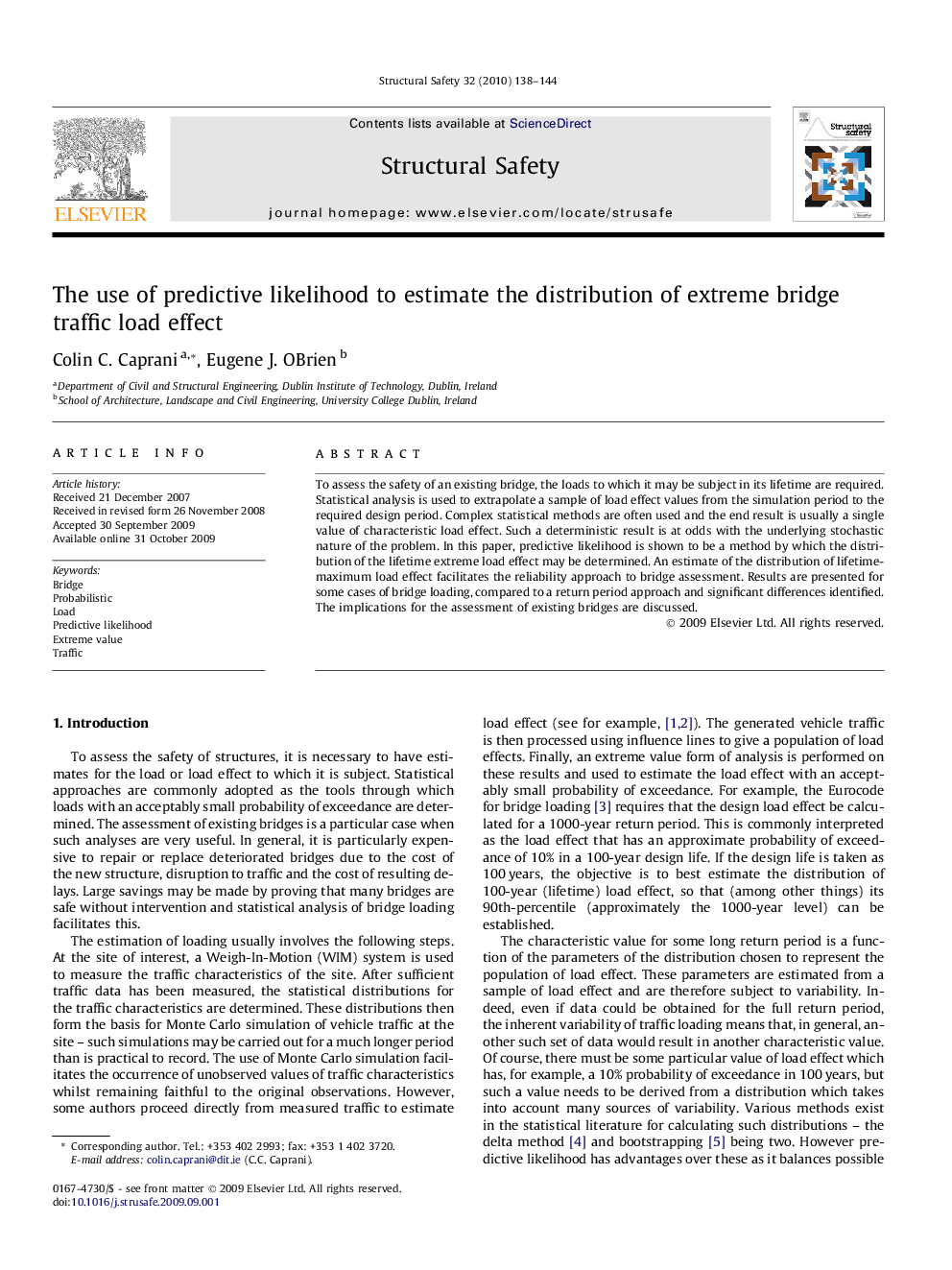| Article ID | Journal | Published Year | Pages | File Type |
|---|---|---|---|---|
| 307688 | Structural Safety | 2010 | 7 Pages |
To assess the safety of an existing bridge, the loads to which it may be subject in its lifetime are required. Statistical analysis is used to extrapolate a sample of load effect values from the simulation period to the required design period. Complex statistical methods are often used and the end result is usually a single value of characteristic load effect. Such a deterministic result is at odds with the underlying stochastic nature of the problem. In this paper, predictive likelihood is shown to be a method by which the distribution of the lifetime extreme load effect may be determined. An estimate of the distribution of lifetime-maximum load effect facilitates the reliability approach to bridge assessment. Results are presented for some cases of bridge loading, compared to a return period approach and significant differences identified. The implications for the assessment of existing bridges are discussed.
